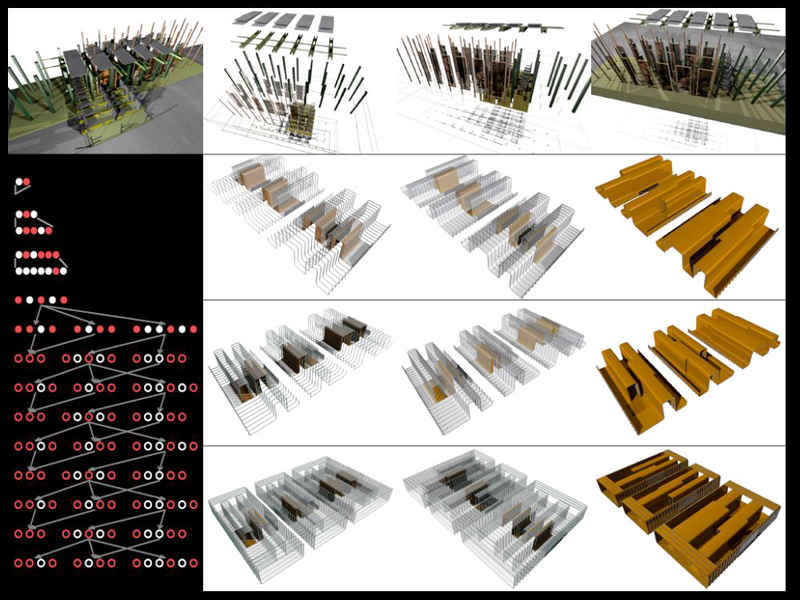
7. Agency and Mathematical Rule: Rule-Based Systems
The bottom three studies here use a system that searches cellular conditions for specific clusters. If it recognizes those clusters that are a part of its rule-set then it will grow by substituting those clusters with new clusters. What is notable about this system is that each iteration carries a collection of all possible states that the rules can produce at that moment of discreet time. Time, here, is discreet, not continuous. The condition-response action of these growth systems suggests that there is an agency to these systems that will generate organizations based on performance criteria rather than conventional decision-making processes. One designs rules, rather than objects, and rules produce diagrams that, when coded into architectural categories like, say, public/private, structure/skin, or building/landscape deliver the kinds of stealth operations that architects like Stan Allen have attributed to diagrammatic influences on architecture. There is some hidden and purposeful agency governing the formation of an object.